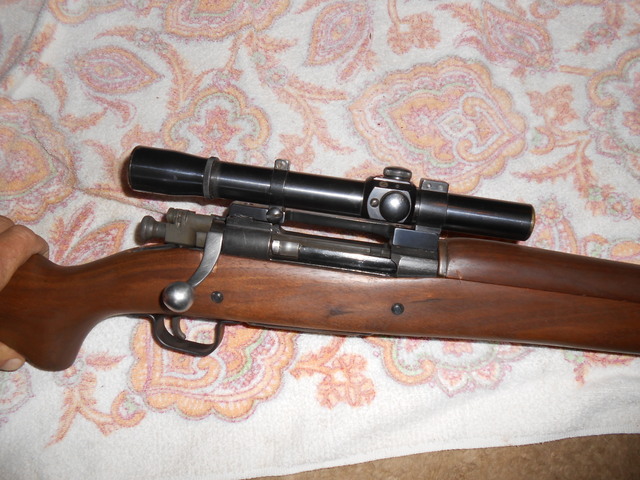Here is an update on shooting my new old Remington 14 in .25 Remington with vintage weaver K4 scope. I obtained some fired .30 Remington cases. No idea on how often they were fired, but trimmed them to a uniform length and reamed the primmer flash hole. I necked them down to .25 Rem using a 7mm case forming/trim die first and then the .25 Rem full length sizer die.
My first loadings used .25-35 Winchester load data with Hogdon CFE 223 powder, Hogdon list 28.5 grains of CFE 223 as max for the .25-35 Win. Why CFE? I used it for several calibers and had two Lyman powder measures set up on my bench with CFE in them. I was loading Hornady 117 grain round nose bullets. Loadings were with powder charge increments in .5 grains starting at 25 to 27.5, five rounds each at 100 yards. Powder charges were weighed on a Sartorius electronic scale which measures to .002 of a grain. Bullets were seated to the canular groove, COL 2.525 inches. All groups were pretty dismal, 6 to 8 inches. The gun has an excellent bore and I expected better. Back to the reloading bench!
First thing, I examine the Hornady round nose bullets. I started weighing the bullets and notice extreme variations in the weight of each bullet. Never had I weighed bullets before. Weights varied from 117.1 to 117.7 grains.
To get the bullet weights more uniform, I decided to make them into hollow points. With my foster case trimmer I put one bullet point first into the case collet. Then another bullet base first into the collet. This allowed the collet to hold the bullets in the same position. For the point reamer, I used a drill bit which miked .193 inches. I sharpened the drill bit with a greater angle than normal. This fit into cutter side of my foster trimmer. Bullets noses were reamed to approximately 115.50 grains. They all didn’t ream to exactly the same weight, but I was able to group them in groups of 115.40, 115.45, 115.50 and 115.56; plus or minus .01 grains.
I again loaded five rounds each with CFE powder charge increments in .5 grains starting at 25 to 27.5. Fired groups were much better. The worst fired group being 3.5 inches. The best group was 1.5 inches with 27.5 grains of CFE 223.
After firing all of these, I had six remaining prepped and primed cases. So I decided to try some Speer GS 120 grain bullets. Weighing these bullets show a .2 to .3 grain variance between bullets. I selected six bullets that weighed 120.3 grains + or - .1 grain. I loaded 3 rounds with 27.5 grains and 3 rounds at 27.9 grains of CFE 223 powder, seated to 2.525 inches. The 27.5 load fired a 2.5 inch group. The 27.9 grain load fired a 1.75 inch group. Clearly good enough for hunting, but more testing will be done.

